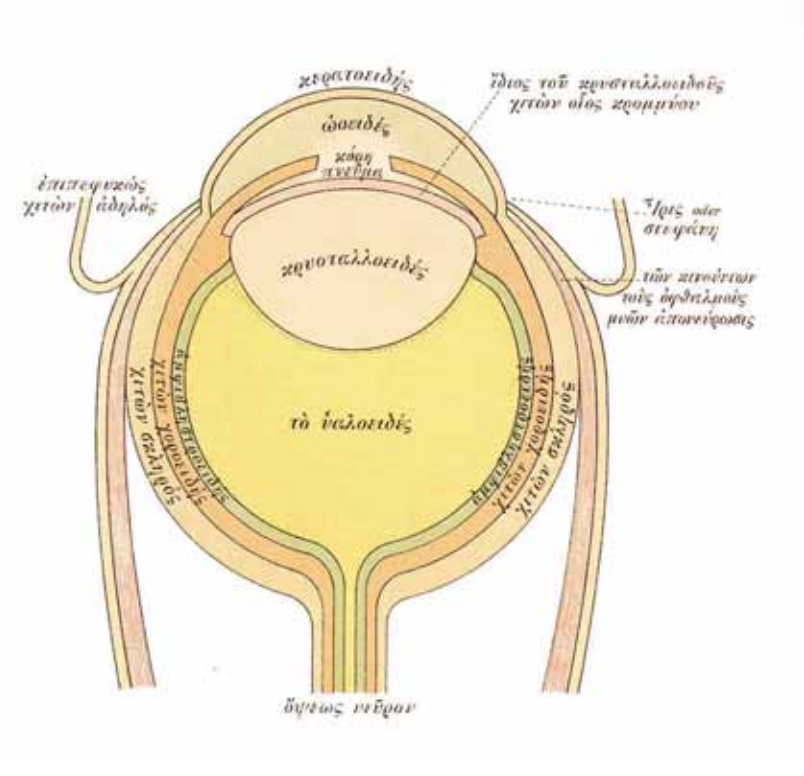Glaucoma historical perspective
|
Glaucoma Microchapters |
|
Diagnosis |
|---|
|
Treatment |
|
Case Studies |
|
Glaucoma historical perspective On the Web |
|
American Roentgen Ray Society Images of Glaucoma historical perspective |
|
Risk calculators and risk factors for Glaucoma historical perspective |

Editor-In-Chief: C. Michael Gibson, M.S., M.D. [1] Associate Editor(s)-in-Chief: Rohan Bir Singh, M.B.B.S.[2]
Historical Perspective
Glaucoma is one of the earliest recognized ocular diseases since Antiquity. In Greek language the word 'glaukos' appears in the works of Homer, where it means - "a sparkling silver glare." The word entered ophthalmology when Hippocrates, in his “Aphorisms”, when he listed - “glaucosis”, among the other diseases of the aged; which he associated with “dimness of vision”.[1] The implied meaning is that of a clouded or blue-green hue of the cornea in end stage forms that may result in corneal edema and/or coinciding cataract. The Hippocratic writings have not clearly differentiated between cataract and glaucoma.
The definition of glaucoma has changed drastically since its introduction around the time of Hippocrates in approximately 400 BC.[1] The first recognition of a disease associated with a rise in intraocular pressure and thus corresponding to what is now known as glaucoma occurred in the Arabian writings, “Book of Hippocratic treatment”, of At-Tabari (10th century).[2] In European medicine, it was Richard Bannister (1622), an English oculist and author of the first book of ophthalmology in English, who recognized glaucoma as a disease with four primary features: increased intraocular pressure, long duration of the disease, the absence of perception of light and the presence of a fixed pupil. However, throughout the 18th century the term glaucoma was still used for inflamed eye wherein the pupil appeared greenish-blue and the visual prognosis was bad, but the tension of the eye was not stressed.[3]
The first complete description came from Antoine-Pierre Demours (1818) after the concept of a rise in intraocular pressure became fully established. G.J. Guthrie and William McKenzie, a Scottish clinician confirmed these findings in 1823 and 1835, respectively. In 1862, Donders described an incapacitating increased eye tension occurring without any inflammatory symptoms as "simple glaucoma". In 1973, Drance provided for the first time the definition of glaucoma as an optic neuropathy caused by increased intraocular pressure and other associated risk factors.[3]
The first patient in the United States federal government's Compassionate Investigational New Drug program, Robert Randall, was afflicted with glaucoma and had successfully fought charges of marijuana cultivation because it was deemed a medical necessity (U.S. v. Randall) in 1976.[4]
References
- ↑ 1.0 1.1 "GLAUCOMA, MESSENGER, AND HIPPOCRATES". Archives of ophthalmology (Chicago, Ill. : 1960). 71: 879–80. 1964. ISSN 0003-9950. PMID 14133878.
|first1=missing|last1=in Authors list (help) - ↑ Leffler, Christopher T.; Hadi, Tamer; Salman, Ali; Vasuki, Vivek; Schwartz, Stephen (2015). "The early history of glaucoma: the glaucous eye (800 BC to 1050 AD)". Clinical Ophthalmology. Dove Medical Press Ltd.: 207. doi:10.2147/opth.s77471. ISSN 1177-5483.
- ↑ 3.0 3.1 Leffler, Christopher T.; Schwartz, Stephen G.; Giliberti, Francesca M.; Young, Matthew T.; Bermudez, Dennis (2015). "Article Commentary: What was Glaucoma Called before the 20th Century?". Ophthalmology and Eye Diseases. SAGE Publications. 7: OED.S32004. doi:10.4137/oed.s32004. ISSN 1179-1721.
- ↑ "US v. Randall, 171 F. 3d 195 - Court of Appeals, 4th Circuit 1999". Google Scholar. Retrieved 2018-03-03.